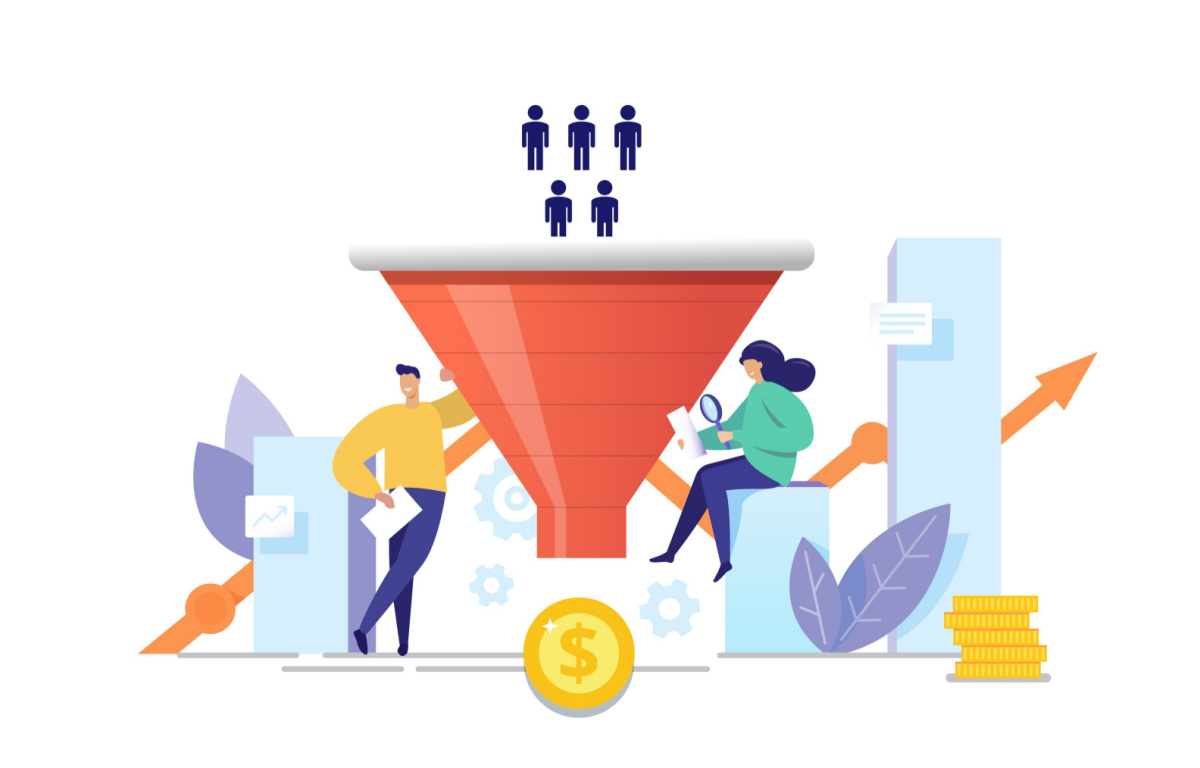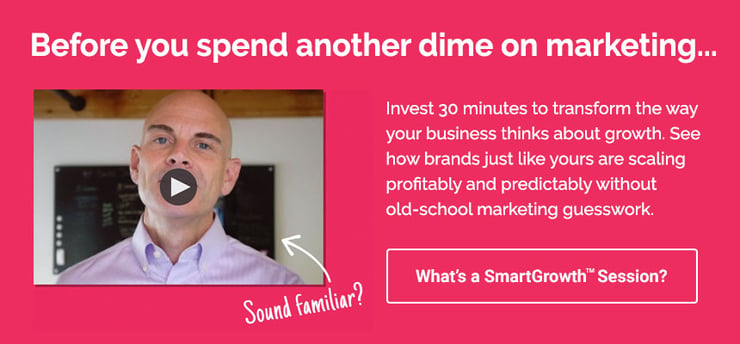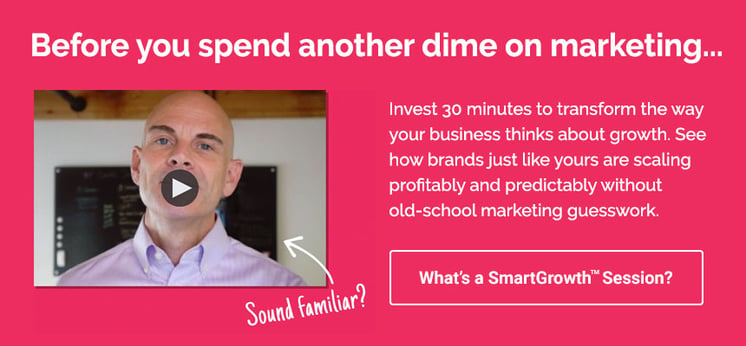For entrepreneurs, it’s all about the hustle. The daily grind often feels like a never-ending cycle of pitches, proposals, and negotiations to get ahead of the game. It’s common for B2B founders to be pulled in a thousand directions simultaneously. But here’s the thing: you can’t afford to wing it when it comes to your B2B sales process. Every stage of the process is crucial for not just closing more deals, but for cultivating the kind of relationships that lead to long-term partnerships with your clients. The B2B sales cycle can be notoriously long and complex, and without a thoughtfully crafted sales process, you’ll be treading water instead of outpacing the competition.
Here’s the good news: your B2B website can and should be a key component of keeping buyers moving along the customer journey. Your website is not just a passive tool. It can be an active player in the sales process if you design it with your B2B sales cycle in mind. Indeed, your website is the one asset on your marketing and sales teams that can be actively working to educate prospects and move them into and through the sales funnel 24/7. In this article, we’ll explain how to align your B2B sales cycle with your website design so you can supercharge your growth strategy.
What is the B2B Sales Cycle?
The B2B sales cycle is the process that B2B sales teams go through to attract leads and turn them into closed/won deals. These stages include prospecting, building relationships, making presentations, addressing objections, closing deals, and finally following up. These six stages mirror the B2B buyer journey. From initial awareness, interest, evaluation, and decision-making to purchase and implementation, each stage plays a vital role in winning a new customer.
How to Align B2B Sales Cycle with Your Website Design
Step 1: Adopt a User-Centric Mindset
Who is your ideal customer? What problems are they trying to solve?
Does your current website speak to them?
With a clear understanding of your target audience and their problems, challenges, and needs you can tailor your messaging to them specifically. Your sales team prospects for clients in much the same manner. Your website should be “prospecting” for new customers, by speaking to their problems directly and leveraging SEO and other inbound marketing strategies to entice new visitors to your website. Your website copywriting should offer empathy and understanding, demonstrate expertise, and provide a unique solution.
A customer-centric website keeps your ideal customers' problems, needs, and pain points at the heart of your messaging and can provide proof, address potential objections, and provide answers to questions that prospects are likely to encounter along the way, alleviating some of the burden from sales teams and ‘warming’ customers up to your brand and your solution long before a meeting is even booked.
Step 2: Make These 5 Pages the Foundation of Your B2B Website
While these won’t be the only pages of your website, they are the best place to start when launching a website redesign. Why? Because they mirror and reinforce the B2B sales cycle and facilitate the customer journey.
- Home: This page orients new visitors to your brand, what your solution is, and who it helps. It’s a high-level introduction page that has the primary goal of moving visitors deeper into the website.
- Cold: This page is targeted at customers early in the B2B sales cycle and is where you demonstrate that you understand the problem while poking holes in alternative solutions.
- Warm: The warm page, often titled the “How it Works” page, is where you highlight what is different and unique about your solution. Here you should dive into how it works, why it’s effective, and how it solves their problem completely.
- Hot: This page is targeted towards customers actively seeking a solution. They know their problem and are serious about finding a solution. Overcome objections by providing proof through case studies and testimonials and boost their confidence via statistics and guarantees.
- Offer: Getting visitors to this page is the ultimate goal of a B2B website. Much more than a “contact us” page, the offer page should make it seamless for a prospect to book a meeting. Be clear about what customers will get for their time and reassure them that there are no strings attached!
Step 3: Tailor Your Messaging to Specific Stages of the B2B Buyer Journey
Unaware Stage
At this stage, the buyer is not yet fully cognizant of the problem they have. Or they may recognize that there is a problem but have not yet determined the cause. It's as though they woke up one morning with back pain. They know that their back hurts, but don’t know why. Your task is to create engaging, high-level content that not only describes the problem but empathizes with the customer. The home page of your website is the ideal location for this content, as it forms the first impression of your brand and reflects how well you understand your target audience.
Problem-Aware Stage
Once the buyer acknowledges they have a problem to solve, the issue becomes their primary concern. “Ah, I have back pain. I need to do something about it.” However, they may not have started exploring potential solutions. This is where your brand steps in. Weave your positioning statement and unique value proposition throughout your messaging. Be sure to articulate any risks associated with not addressing the issue, i.e., long-term damage to your spine, decreased mobility, etc. Demonstrate your expertise in understanding the problem, differentiate yourself from alternative solutions, and throw rocks at the competition.
Solution-Aware Stage
At this stage, the buyer is actively seeking solutions to their problem. Dive deep into what makes your solution unique, why it works, and the outcomes it creates. How are you going to solve their back pain? What relief does your solution provide? Demonstrate what’s different about your solution and the benefits it provides to customers. Most of this content should live on your warm page.
Product-Aware Stage
The buyer is now aware of your solution and is weighing it against competitors. “Should I have surgery or try acupuncture?” At this crucial consideration stage, instill trust and confidence through testimonials, reviews, and case studies. Anticipate potential questions and clearly state any warranties or guarantees you offer. All these elements should find a place on your hot page.
Most Aware Stage
At the most aware stage, the buyer is now a customer, familiar with your product and its effectiveness in solving their problem. Smart B2B brands continue to nurture these customers by providing excellent customer service, anticipating future needs, and developing new products to meet those needs. It's crucial to ensure your website's user experience (UX) makes it seamless for existing customers to get answers to questions and access help when they need it, primarily through email communication, social media, and customer service interactions.
The Benefits of Weaving the B2B Sales Cycle Through Your Website Design
Incorporating the B2B sales cycle into your website design acts like a roadmap guiding your potential customers through the buyer journey. By tailoring the content and design of your site to reflect all the stages of the customer’s journey - from unaware to most aware - you deliver targeted, relevant information at the right time, effectively addressing their needs and concerns. This strategic approach helps B2Bs leverage their websites as customer acquisition tools to drive conversions, ensuring prospects move seamlessly from one stage to the next without losing interest or seeking alternative solutions. Moreover, this method contributes to the generation of high-quality leads prepared for your sales team to engage. By the time these leads reach your sales team, they are well-informed and closer to a buying decision, making the sales process more efficient and successful.
Ready to Maximize Your B2B Sales Cycle Through Effective Website Design?
Harnessing your B2B sales cycle and integrating it into your website design isn't just about enhancing aesthetics—it's about driving your business success. As we've discussed – from the initial unawareness stage to becoming the most aware – your website can actively engage with your prospects, providing them with the precise information they need at each stage of their buyer's journey. Not only does this foster trust and authority, but it also generates high-quality leads that are primed for conversion.
Remember, your website isn't just a digital portfolio of your brand—it's an integral part of your sales process. So, why not give it the attention it deserves? If you're ready to take your B2B sales cycle to the next level and design a website that works for you, book a no-obligation introduction to Brand Theory today. Take the first step towards transforming your website from a passive tool into an active member of your sales team.





.png)
.png)
.png)